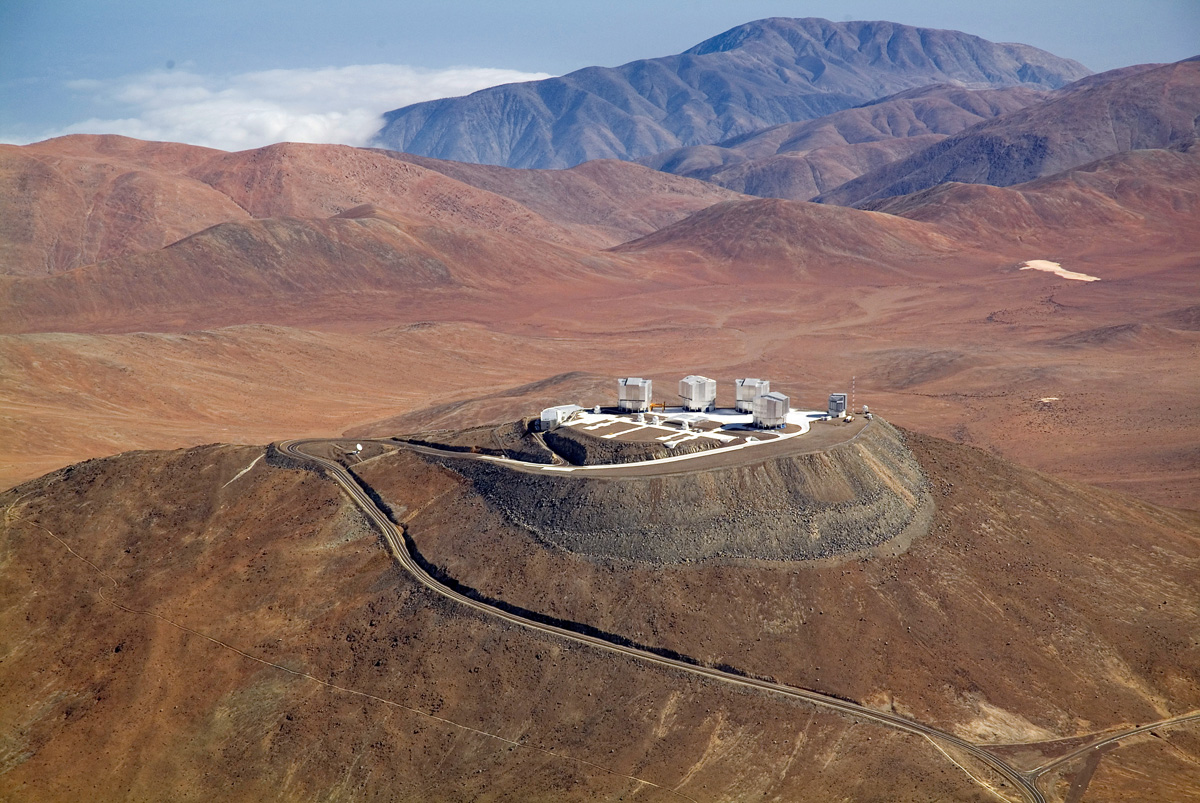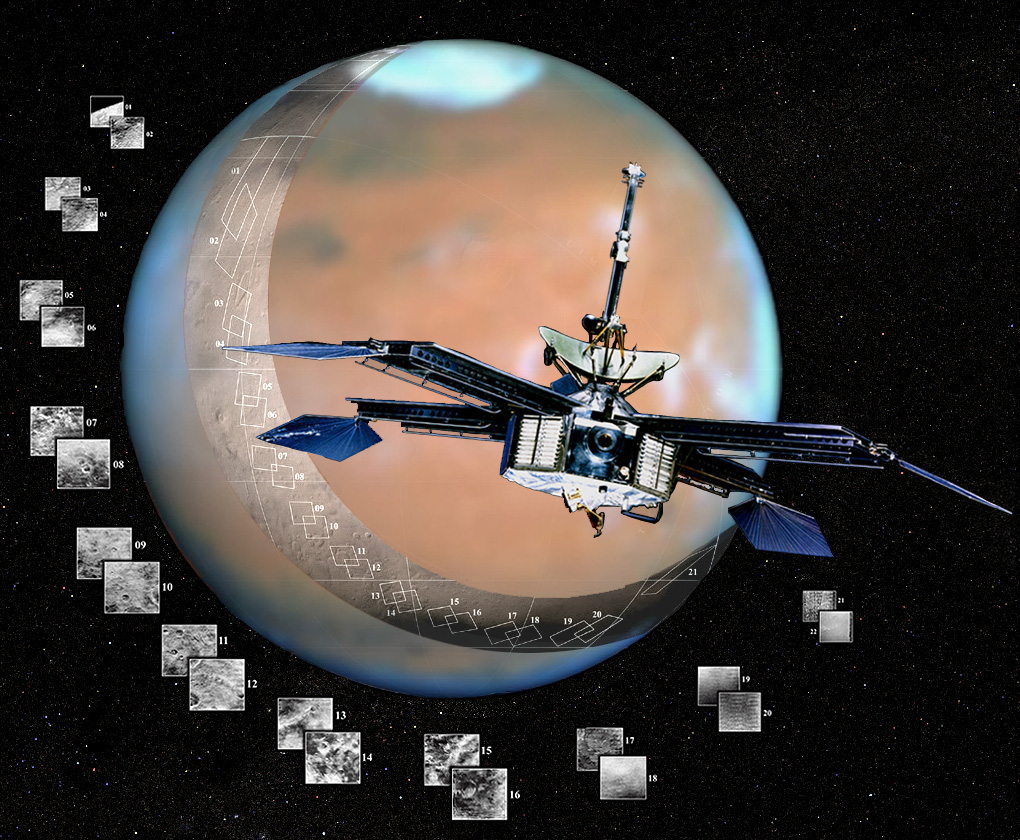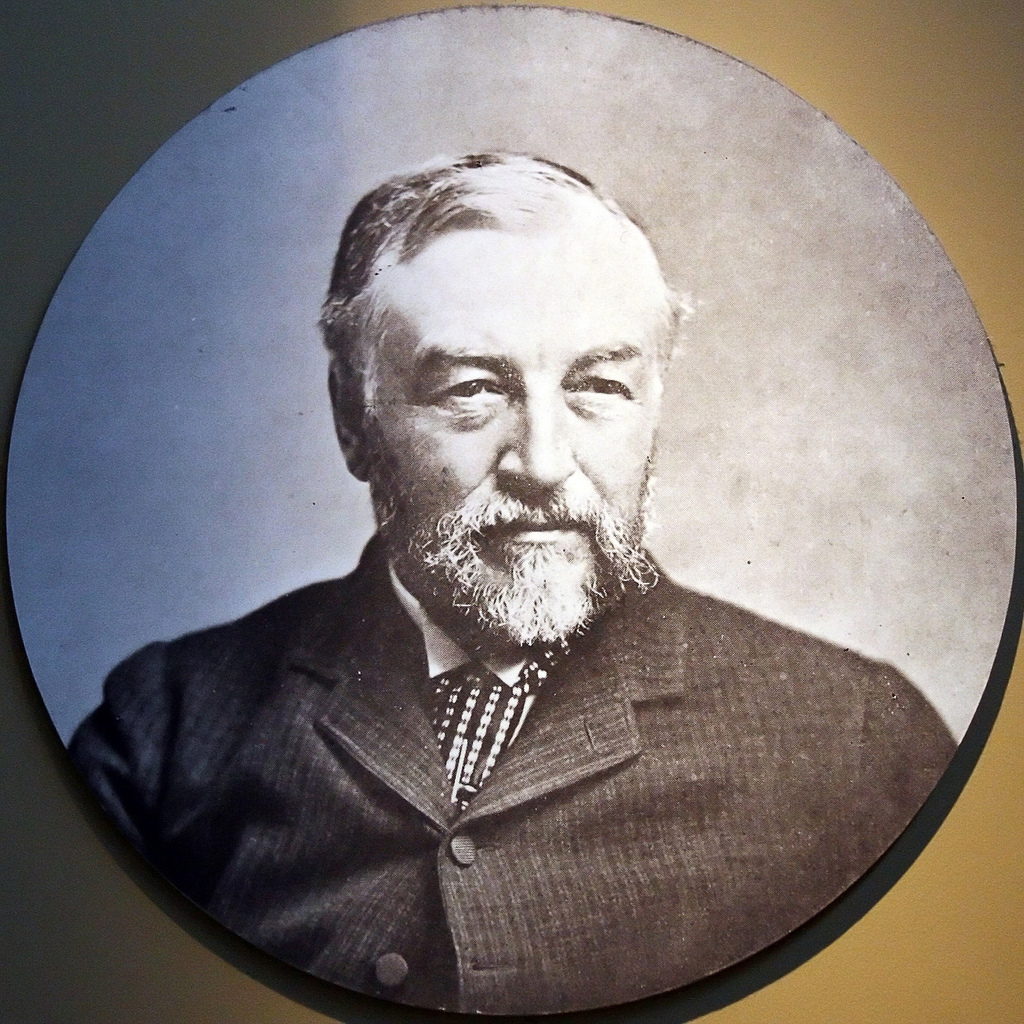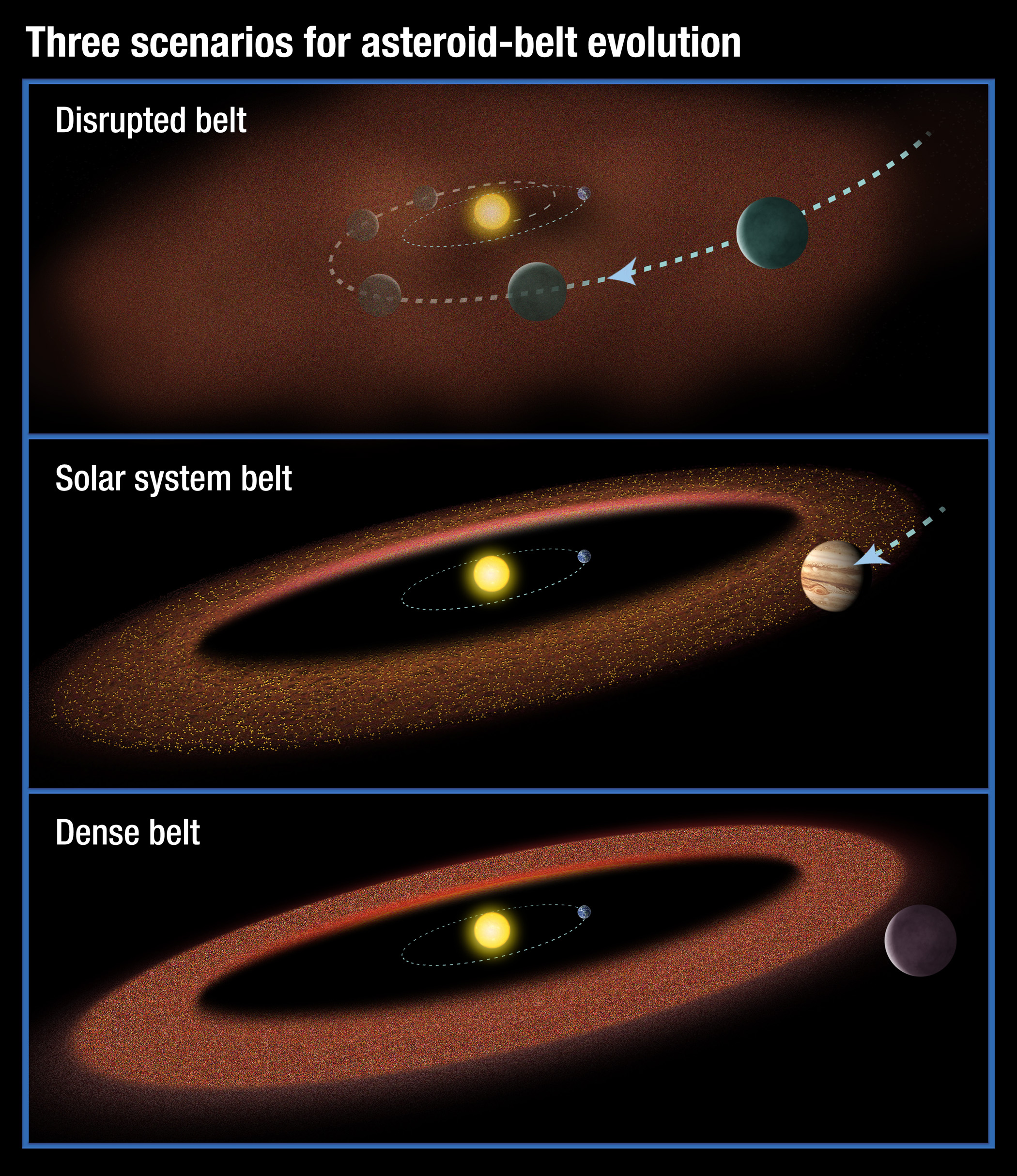Next Launch
Total Students
2,609
Total Launches
683
Eggs Survived
418 61.2%
Rockets Survived
536 78.5%
Aug. 1, 2012
A Brand New Age: Queue Observing at Mt. Paranal
by Dr. Marc J. Kuchner
First a caravan of white observatory cars arrives, winding up the narrow road to the 2600-m- (~8500-foot-) high summit. Then the shutters around the domes open, and rays from the setting sun alight on colossal mirrors and metal struts. It’s the beginning of another busy night at Mt. Paranal, Chile, where I am learning about new, more efficient ways of managing a modern observatory.
I stepped into the observatory’s control room to soak up some of the new, unfamiliar culture. Here, under florescent lights and drop ceilings are banks of computer screens, one bank to control each of the four big telescopes on the mountaintop and a few others too. At each bank sits two people, a telescope operator and an astronomer.
The layout of this workspace was not unfamiliar to me. But the way these Mt. Paranal astronomers work certainly was. When I was cutting my teeth at Mt. Palomar observatory in California, I would only go to the telescope to take my own data. In stark contrast. everyone observing at Mt Paranal tonight is taking data for someone else.
The Mt. Paranal astronomers each spend 105 nights a year here on the mountain performing various duties, including taking data for other astronomers. The latter, they call “executing the queue.” Headquarters in Germany decides what parts of the sky will have priority on any given night (the queue). Then the Mt. Paranal astronomers march up the mountain and carry out this program, choosing calibrators, filling the log books, and adapting to changing conditions. They send the data back to headquarters, and from there it makes its way out to the wider astronomical community for study.
This new way of working allows the Mt. Paranal astronomers to specialize in just one or two telescope instruments each. Surely this plan is more efficient than the old-fashioned way, where each of us had to learn every instrument we used from scratch—sifting through manuals at 3:00 AM when the filter wheel got stuck or the cryogen ran out, watching precious observing time tick away. Here at Mt. Paranal, much of the work is done in a big room full of people, not off by yourself, reducing some dangers of the process. Also, queue observing cuts down on plane travel, an important step for cutting carbon emissions.
It’s a brand new age, I thought as I watched the giant domes spin in the silent, cold Chilean night. And maybe with queue observing, some of the romance is gone. Still, my colleagues and I couldn’t help saying as we stared out across the moonlit mountains: I can’t believe how lucky we are to be here.
Dr. Marc J. Kuchner is an astrophysicist at the Exoplanets and Stellar Astrophysics Laboratory at NASA’s Goddard Space Flight Center. NASA’s Astrophysics Division works on big questions about the origin and evolution of the universe, galaxies, and planetary systems. Explore more at http://www.science.nasa.gov/astrophysics/. Kids can explore these topics at http://spaceplace.nasa.gov/space.
This article was provided by the Jet Propulsion Laboratory, California Institute of Technology, under a contract with the National Aeronautics and Space Administration.
 European Southern Observatory at Mt. Paranal, Chile.
European Southern Observatory at Mt. Paranal, Chile.
Sept. 1, 2012
Doing Science with a Spacecraft’s Signal
by David Doody
Mariner 2 to Venus, the first interplanetary flight, was launched August 27 fifty years ago. This was a time when scientists were first learning that Venus might not harbor jungles under its thick atmosphere after all. A Russian scientist had discovered that atmosphere during the rare Venus transit of 1761, because of the effects of sunlight from behind.
Mariner 2 proved interplanetary flight was possible, and our ability to take close-up images of other planets would be richly rewarding in scientific return. But it also meant we could use the spacecraft itself as a “light” source, planting it behind an object of our choosing and making direct measurements.
Mariner 4 did the first occultation experiment of this sort when it passed behind Mars as seen from Earth in July 1965. But, instead of visible light from the Sun, this occultation experiment used the spacecraft’s approximately 2-GHz radio signal.
The Mariner 4 experiment revealed Mars’ thin atmosphere. Since then, successful radio science occultation experiments have been conducted at every planet and many large moons. And another one is on schedule to investigate Pluto and its companion Charon, when the New Horizons spacecraft flies by in July 2015. Also, during that flyby, a different kind of radio science occultation experiment will investigate the gravitational field.
The most recent radio science occultation experiment took place September 2, 2012, when the Cassini spacecraft carried its three transmitters behind Saturn. These three different frequencies are all kept precisely “in tune” with one another, based on a reference frequency sent from Earth. Compared to observations of the free space for calibration just before ingress to occultation, the experiment makes it possible to tease out a wide variety of components in Saturn's ionosphere and atmosphere.
Occultation experiments comprise only one of many categories of radio science experiments. Others include tests of General Relativity, studying the solar corona, mapping gravity fields, determining mass, and more. They all rely on NASA’s Deep Space Network to capture the signals, which are then archived and studied.
Find out more about spacecraft science experiments in “Basics of Space Flight,” a website and book by this author, http://www2.jpl.nasa.gov/basics/index.php. Kids can learn all about NASA’s Deep Space Network by playing the “Uplink-Downlink” game at http://spaceplace.nasa.gov/dsn-game.
This article was provided by the Jet Propulsion Laboratory, California Institute of Technology, under a contract with the National Aeronautics and Space Administration.
 In this poster art of Mariner 4, you can see the parabolic reflector atop the spacecraft bus. Like the reflector inside a flashlight, it sends a beam of electromagnetic energy in a particular direction. Credit: NASA/JPL/Corby Waste.
In this poster art of Mariner 4, you can see the parabolic reflector atop the spacecraft bus. Like the reflector inside a flashlight, it sends a beam of electromagnetic energy in a particular direction. Credit: NASA/JPL/Corby Waste.
Oct. 1, 2012
A Cosmic Tease: Trials of the Herschel Space Telescope Science Teams
by Dr. Marc J. Kuchner
Vast fields of marble-sized chunks of ice and rock spun slowly in the darkness this week, and I sat in the back of a grey conference room with white plastic tables spread with papers and laptops. I was sitting in on a meeting of an international team of astronomers gathered to analyze data from the Herschel Infrared Observatory. This telescope, sometimes just called Herschel, orbits the Sun about a million miles from the Earth.
The meeting began with dinner at Karl’s house. Karl charred chorizo on the backyard grill while the airplanes dribbled into Dulles airport. Our colleagues arrived, jetlagged and yawning, from Germany, Sweden, and Spain, and we sat on Karl’s couches catching up on the latest gossip. The unemployment level in Spain is about twenty percent, so research funding there is hard to come by these days. That’s not nice to hear. But it cheered us up to be with old friends.
The meeting commenced the next morning, as the vast fields of ice and rock continued to spin—shards glinting in the starlight. Or maybe they didn’t. Maybe they didn’t exist at all.
You see, this team is looking at a series of images of stars taken by a device called a bolometer that is blind to ordinary starlight. Instead, the bolometer inside Herschel senses infrared light, a kind of light that we would probably refer to as heat if we could feel it. But the idea of pointing the bolometer at the stars was not to collect ordinary starlight. It was to measure heat coming from the vicinity of these stars, like an infrared security camera, in case there was something else to be found lurking nearby.
And lo and behold, for a handful of stars, the bolometer measurements were off the charts! Maybe something was orbiting these stars. From the details of the bolometer readings—which channels lit up and so on—you would guess that this stuff took the form of majestic fields or rings of icy and rocky particles. It would be a new kind of disk, a discovery worth writing home to Madrid about.
There are several teams of astronomers analyzing data from the Herschel Space Telescope. They call themselves by oddly inappropriate sounding acronyms: GASPS, DUNES, DEBRIS. For the time being, the scientists on these teams are the only ones with access to the Herschel data. But in January, all the data these teams are working on will suddenly be released to the public. So they are all under pressure to finish their work by then. The team whose meeting I was sitting in on would like to publish a paper about the new disks by then.
But it’s not so simple. The stars that this team had measured were relatively nearby as stars go, less than a few hundred light years. But the universe is big, and full of galaxies of all kinds—a sea of galaxies starting from maybe a hundred thousand light years away, and stretching on and on. Maybe one of those background galaxies was lined up with each of the stars that had lit up the bolometer—fooling us into thinking they were seeing disks around these stars.
The team argued and paced, and then broke for lunch. We marched to the cafeteria through the rain. Meanwhile, vast fields of marble-sized chunks of ice and rock spun slowly in the darkness. Or maybe they didn’t.
What else did Herschel recently uncover? Find out at http://spaceplace.nasa.gov/comet-ocean.
Dr. Marc J. Kuchner is an astrophysicist at the Exoplanets and Stellar Astrophysics Laboratory at NASA’s Goddard Space Flight Center. NASA’s Astrophysics Division works on big questions about the origin and evolution of the universe, galaxies, and planetary systems. Explore more at http://science.nasa.gov/astrophysics/.
This article was provided by the Jet Propulsion Laboratory, California Institute of Technology, under a contract with the National Aeronautics and Space Administration.
 Samuel Pierpoint Langley, who developed the bolometer in 1878. His instrument detects a broad range of infrared wavelengths, sensitive to differences in temperature of one hundred-thousandth of a degree Celsius (0.00001 C). In 1961, Frank Low developed the germanium bolometer, which is hundreds of times more sensitive than previous detectors and capable of detecting far-infrared radiation.
Samuel Pierpoint Langley, who developed the bolometer in 1878. His instrument detects a broad range of infrared wavelengths, sensitive to differences in temperature of one hundred-thousandth of a degree Celsius (0.00001 C). In 1961, Frank Low developed the germanium bolometer, which is hundreds of times more sensitive than previous detectors and capable of detecting far-infrared radiation.
Nov. 1, 2012
It Takes More Than Warm Porridge to Make a Goldilocks Zone
by Diane K. Fisher
The "Goldilocks Zone" describes the region of a solar system that is just the right distance from the star to make a cozy, comfy home for a life-supporting planet. It is a region that keeps the planet warm enough to have a liquid ocean, but not so warm that the ocean boils off into space. Obviously, Earth orbits the Sun in our solar system's "Goldilocks Zone."
But there are other conditions besides temperature that make our part of the solar system comfortable for life. Using infrared data from the Spitzer Space Telescope, along with theoretical models and archival observations, Rebecca Martin, a NASA Sagan Fellow from the University of Colorado in Boulder, and astronomer Mario Livio of the Space Telescope Science Institute in Baltimore, Maryland, have published a new study suggesting that our solar system and our place in it is special in at least one other way.
This fortunate "just right" condition involves Jupiter and its effect on the asteroid belt.
Many other solar systems discovered in the past decade have giant gas planets in very tight orbits around their stars. Only 19 out of 520 solar systems studied have Jupiter-like planets in orbits beyond what is known as the "snow line"--the distance from the star at which it is cool enough for water (and ammonia and methane) to condense into ice. Scientists believe our Jupiter formed a bit farther away from the Sun than it is now. Although the giant planet has moved a little closer to the Sun, it is still beyond the snow line.
So why do we care where Jupiter hangs out? Well, the gravity of Jupiter, with its mass of 318 Earths, has a profound effect on everything in its region, including the asteroid belt. The asteroid belt is a region between Mars and Jupiter where millions of mostly rocky objects (some water-bearing) orbit. They range in size from dwarf planet Ceres at more than 600 miles in diameter to grains of dust. In the early solar system, asteroids (along with comets) could have been partly responsible for delivering water to fill the ocean of a young Earth. They could have also brought organic molecules to Earth, from which life eventually evolved.
Jupiter's gravity keeps the asteroids pretty much in their place in the asteroid belt, and doesn't let them accrete to form another planet. If Jupiter had moved inward through the asteroid belt toward the Sun, it would have scattered the asteroids in all directions before Earth had time to form. And no asteroid belt means no impacts on Earth, no water delivery, and maybe no life-starting molecules either. Asteroids may have also delivered such useful metals as gold, platinum, and iron to Earth's crust.
But, if Jupiter had not migrated inward at all since it formed father away from the Sun, the asteroid belt would be totally undisturbed and would be a lot more dense with asteroids than it is now. In that case, Earth would have been blasted with a lot more asteroid impacts, and life may have never had a chance to take root.
The infrared data from the Spitzer Space Telescope contributes in unexpected ways in revealing and supporting new ideas and theories about our universe. Read more about this study and other Spitzer contributions at spitzer.caltech.edu. Kids can learn about infrared light and enjoy solving Spitzer image puzzles at spaceplace.nasa.gov/spitzer-slyder.
This article was provided by the Jet Propulsion Laboratory, California Institute of Technology, under a contract with the National Aeronautics and Space Administration.
 Our solar system is represented by the middle scenario, where the gas giant planet has migrated inward, but still remains beyond the asteroid belt.
Our solar system is represented by the middle scenario, where the gas giant planet has migrated inward, but still remains beyond the asteroid belt.